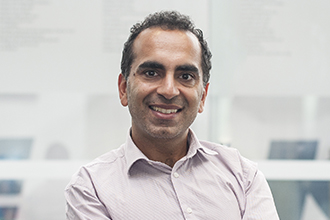
Dr Sant-Rayn Pasricha
Victoria’s Walter and Eliza Hall Institute of Medical Research (WEHI) has been designated by the World Health Organisation as the WHO Collaborating Centre for Anaemia Detection and Control.
The designation means that WHO will draw on WEHI researchers’ guidance on the best approaches to diagnose and treat anaemia, in support of WHO programs at national and global levels.
The designation is a recognition of the expertise of WEHI researchers in combatting anaemia, including the work led by Associate Professor Sant-Rayn Pasricha, who is also a haematologist at The Royal Melbourne Hospital.
“As a WHO Collaborating Centre we can help provide WHO with information that will help improve the health of millions of women and children around the world,” he says.
“The WHO set a goal of halving iron deficiency in pregnancy women between 2012 and 2025 – as well as making substantial improvements in children’s growth and development that rely on overcoming iron deficiency. There is still considerable work to be done to determine which iron interventions are effective in different countries.”
“It’s here that our multidisciplinary skills in haematology, basic science and global health are very useful,” he adds.
Associate Professor Pasricha’s research team focusses on understanding iron deficiency at the laboratory level with an interest in how the master controller of systemic iron homoestasis, hepcidin, is regulated.
“We are using novel epigenetic approaches to characterise new pathways which may regulate hepcidin gene expression. In addition, we are studying mechanisms by which erythropoiesis and anaemia may affect hepcidin expression,” he says.
In the field, the WEHI researchers are undertaking large randomised controlled trials of iron interventions in infants in rural Bangladesh and in pregnant women in Malawi.
“These trials will provide much needed evidence to inform global health anaemia control policies. Samples from these trials will be available for analysis using cutting edge platforms including 16S rRNA gene sequencing for microbiota, CyTOF and flow cytometry, and molecular characterization, for example using high throughput RNA sequencing,” says Professor Pasricha.
As a Collaborating Centre, WEHI will also contribute to guidance on how iron deficiency can be diagnosed and treated in Australia, says Associate Professor Pasricha.
“Twelve per cent of Australian women are currently iron deficient, and one in 10 Australians has been iron deficient at some point of their lives. Iron deficiency is an issue for Australians of all ages – from young children through to the elderly – and it’s really important that doctors understand the best ways to treat iron deficiency.
“Importantly, there have been some recent advances in the best ways to administer iron supplements to treat iron deficiency – which will have widespread benefits on people’s health,” he said.